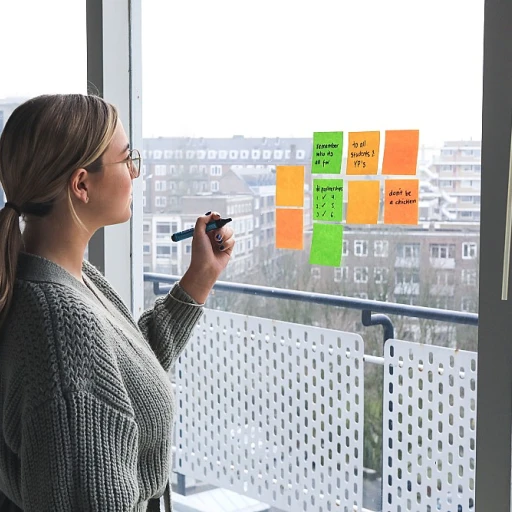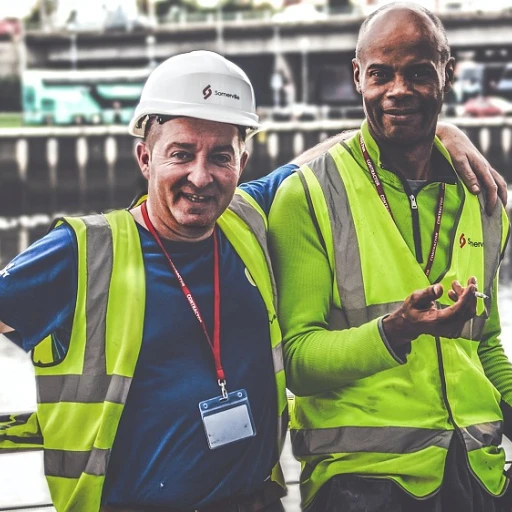
Understanding Team Building in the Workplace
{Recognizing the Role of Team Dynamics
In the contemporary workplace, team building has emerged as a critical component in fostering a productive, harmonious environment. At its core, team building involves structured activities that promote communication, collaboration, and mutual trust among team members. These activities aim to bridge gaps, build trust, and enhance the team dynamics essential for achieving collective objectives.
Understanding team building begins with recognizing its potential to improve the workplace. It serves not only as a means to strengthen personal connections but also as a strategic tool to harness diverse skills and perspectives. When implemented effectively, it can lead to improved problem-solving skills, better decision-making processes, and enhanced leadership skills among team members.
By fostering a sense of unity and shared purpose, team-building activities can boost employee morale and engagement. These activities encourage team members to articulate questions and express concerns, ultimately leading to improved communication and a more robust team spirit. As highlighted in various work settings, team building significantly impacts both the employees' professional experiences and their personal lives, contributing to a healthier balance.
}The Connection Between Team Building and Work-Life Balance
The Interplay of Team Building and Individual Well-being
The establishment of a cohesive group environment is paramount in today’s dynamic workplace. When a team is effectively synchronized, each member feels valued and better supported. This emphasis on collective synergy directly impacts work-life balance, as a harmonious work environment provides members more space and energy for personal pursuits.Enhanced Collaboration and Communication Skills
Team building, at its core, seeks to foster communication skills among members. When people engage in activities focused on teamwork, they build trust and improve interpersonal dynamics. This improved communication extends beyond specific projects or tasks, enhancing overall workplace culture. A well-communicated approach to work reduces conflict and minimizes stress, resulting in a healthier balance between work and life.Boosting Problem Solving Skills
Partaking in teamwork activities often simulates real-life challenges, pushing members to hone their problem solving skills. With enhanced capabilities in problem resolution, team members are likely to spend less time on avoidable errors, reducing overtime work and freeing up time for personal regeneration. A workplace that supports problem-solving fosters quicker decision making, allowing individuals more leisure time outside of work’s demands.Increasing Creative Thinking and Decision Making
Creative thinking is often stimulated through effective team building activities. When encouraged to think outside traditional boundaries, team members contribute innovatively to the team objective, enrichening both their collective and individual work experience. This collaborative creativity promotes a vibrant group environment conducive to strategic decision making, equipping teams to handle obstacles more efficiently. Embracing the role of these elements within organizations contributes not only to the immediate success of projects but uplifts the work-life balance for employees. Implementing strategic team-building exercises can serve dual purposes—achieving corporate aims while ensuring that group members lead fulfilling personal lives. For more insights, readers can explore inspiring quotes for boosting people engagement to further enhance their understanding.Types of Team Building Activities
Exploring Various Approaches for Team Cohesion
In today's dynamic workplace, team building activities are an invaluable tool to foster a more harmonious and productive work environment. These activities serve a dual purpose: enhancing communication skills among team members and promoting an enjoyable company culture. One of the most common approaches is problem-solving exercises that challenge the team to collaborate effectively. These activities provide a platform for each team member to demonstrate leadership skills and creative thinking. As teams work together to overcome challenges, they build trust and strengthen their decision-making abilities. Group projects, where each team member is assigned a specific role, are also great for reinforcing collaboration skills. Such projects encourage team cohesion as members rely on each other's strengths to achieve a common objective. Moreover, sharing the result upon project completion can boost team morale and reinforce the value of teamwork. For a more relaxed atmosphere, you might consider organizing social events or retreats. These can be excellent opportunities for team members to connect outside the usual work setting, facilitating more open communication and stronger relationships. Sports and physical activities offer another avenue for enhancing teamwork and camaraderie. Participating in these activities encourages members to work towards a collective goal, all while building physical and mental resilience. If you're interested in learning more about how these activities can directly impact work-life balance, consider exploring navigating the complexities of work-life balance through personal stories. These insights shine a light on how personal experiences in team building can significantly contribute to achieving a balanced work life.Real-Life Team Building Experiences
Gaining Insight from Team Building Experiences
Team building activities are more than just a break from the regular routine; they serve a greater purpose in enhancing relationships among team members and can significantly impact team cohesion. Real-life experiences from various companies highlight how effective team building can be in achieving desired workplace objectives. Consider a team engaged in a problem-solving activity tailored around a challenging project they were struggling with. This building activity encouraged creative thinking and sharpened communication skills. Members who participated reported improvements in both their collaborative approach and their ability to address complex issues effectively. In another instance, a group embarked on a leadership skills development activity. This experience not only filled gaps in leadership but also helped in building trust among team members. As individual strengths were recognized and utilized, the collective work environment became more supportive and cohesive. This transformation fostered a positive company culture, and ultimately, a healthier work-life balance for everyone involved. Admittedly, it’s not always straightforward to implement these activities. Yet, with strategic planning, a commitment to privacy policy and user agreement guidelines, and careful selection of tools, the beneficial outcomes can be substantial. Whether enhancing collaboration, sharpening decision-making skills, or simply boosting morale, the tangible results of such endeavors should not be underestimated.Challenges in Implementing Team Building
Common Obstacles in Facilitating Team Connection
Implementing team-building activities can come with its own set of challenges that organizations need to navigate. These challenges can impact how well team members connect and work towards a common goal. Let’s delve into some common obstacles that might arise during the process.- Lack of Clear Objectives: One of the primary challenges in team-building activities is the lack of clear objectives. Companies often initiate these activities without predefined goals, which can lead to confusion and diminished engagement among members. Establishing clear objectives can help ensure that everyone is on the same page, enhancing teamwork and cohesion.
- Resource Constraints: Effective building activities require adequate resources, including time, money, and personnel. Companies sometimes struggle with allocating these resources efficiently, which can restrict the execution and impact of the activity. Strategic planning and prioritization of resources are essential to overcoming this hurdle.
- Differences in Personalities and Skills: Each team is made up of individuals with unique personalities and diverse skills. This diversity can sometimes lead to clashes or misunderstandings during activities. Encouraging open communication and fostering an environment of trust and respect can help mitigate these issues.
- Resistance to Participation: Not all team members might be enthusiastic about team-building exercises. Some may question the value of such events or feel uncomfortable with specific activities. Building a culture of inclusivity and clearly explaining the benefits of these activities can help ease resistance and encourage more active participation.
- Evaluating Success: Measuring the effectiveness of team-building initiatives can be challenging. Companies need to develop metrics or methods for assessing the impact on team cohesion, communication skills, or problem-solving skills. Gathering feedback through surveys or interviews with team members can provide valuable insights into the success of these activities.
Strategies for Effective Team Building
Optimizing Team Building for Success
Achieving effective team building requires strategic planning and implementation. Ensuring that the activities align with the overarching objectives of enhancing work-life balance is crucial.
Focus on Clear Objectives
Successful team building begins with setting clear objectives. Understand the specific goals your team should achieve, such as improving communication skills or fostering problem solving skills. A well-defined objective provides direction and helps ensure that each team building activity contributes to your desired outcomes.
Customize Activities for Your Team
The most effective activities are tailored to the group's unique dynamics and needs. For instance, some teams might benefit from problem-solving challenges that promote creative thinking, while others might need exercises that build trust or enhance communication skills. Tailoring activities to your team members ensures they are more engaged and invested in the outcomes.
Utilize the Right Tools and Techniques
Using appropriate tools and techniques can significantly enhance the effectiveness of your team building efforts. Consider incorporating both technology-based solutions for remote teams and physical activities for in-person groups. Moreover, leveraging interviews and surveys can provide insights into the preferred activities and areas that need improvement.
Promote Leadership and Collaboration
- Encourage the development of leadership skills by assigning team members to lead different activities.
- Emphasize the importance of teamwork and collaboration through group tasks.
- Promote open communication to ensure everyone’s voice is heard, reinforcing a unified team culture.
Evaluate and Adapt Regularly
Regular assessment of team building activities is vital. By evaluating the success of each exercise, you can determine its effect on improving team cohesion and work-life balance. Solicit feedback from participants to identify strengths and areas for improvement. This continuous evaluation allows you to adapt and refine your approach, ensuring that your initiatives remain effective and relevant over time.












